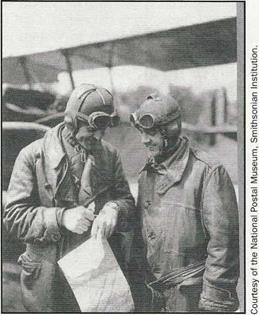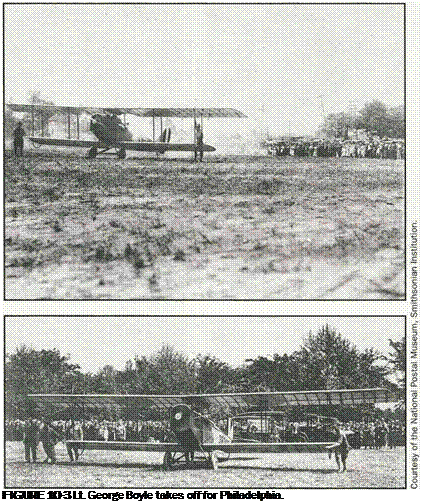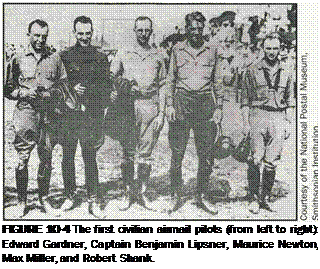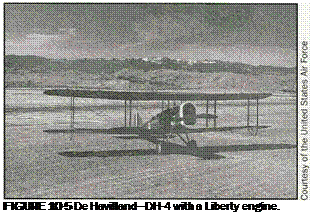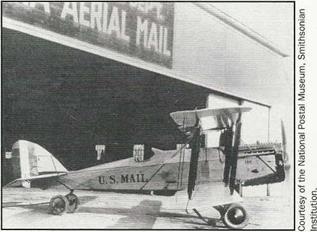Ш U. S. Airlines (Part 121) 1982-Present
he NTSB wishes to make clear to all users of si the following list of accidents that the information it contains cannot, by itself, be used to compare the safety either of operators or of aircraft types. Airlines that have operated the greatest numbers of flights and flight hours could be expected to have suffered the greatest number of
fatal-to-passenger accidents (assuming that such accidents are random events, and not the result of some systematic deficiency). Similarly, the most used aircraft types would tend to be involved in such accidents more than lesser used types. The NTSB also cautions the user to bear in mind when attempting to compare today’s airline system to prior years that airline activity (and hence exposure to risk) has risen by almost 100% from the first year depicted to the last.
|
Passengers
|
Date
|
Location
|
Operator
|
Aircraft Type
|
Fatal
|
Surv
|
|
1/13/82
|
WASHINGTON, DC
|
AIR FLORIDA
|
BOEING 737-222
|
70
|
4
|
|
1/23/82
|
BOSTON, MA
|
WORLD AIRWAYS
|
MCDONNELL DOUGLAS DC-10-30
|
2
|
198
|
|
7/09/82
|
NEW ORLEANS, LA
|
PAN AMERICAN WORLD AIRWAYS
|
BOEING 727-235
|
137
|
0
|
|
11/08/82
|
HONOLULU, HI
|
PAN AMERICAN WORLD AIRWAYS
|
BOEING 747-100
|
1
|
274
|
|
01/09/83
|
BRAINERD, MN
|
REPUBLIC AIRLINES
|
CONVAIR 580-11-А
|
1
|
29
|
|
10/11/83
|
PINCKNEYVILLE, IL
|
AIR ILLINOIS
|
HAWKER SIDDELEY HS-748-2A
|
7
|
0
|
|
01/01/85
|
LA PAZ, BOLIVIA
|
EASTERN AIR LINES
|
BOEING 727-225
|
21
|
0
|
|
01/21/85
|
RENO, NV
|
GALAXY AIRLINES
|
LOCKHEED 188C
|
64
|
1
|
|
08/02/85
|
DALLAS/FT WORTH, TX
|
DELTA AIRLINES
|
LOCKHEED
|
126
|
26
|
L-1011-385-1
Continued
|
|
Date
|
Location
|
Operator
|
Aircraft Type
|
Fatal
|
Surv
|
|
09/06/85
|
MILWAUKEE, Wl
|
MIDWEST EXPRESS AIRLINES
|
DOUGLAS DC-9-14
|
27
|
0
|
|
12/12/85
|
GANDER,
NEWFOUNDLAND
|
ARROW AIRWAYS
|
DOUGLAS DC-8-63
|
248
|
0
|
|
02/04/86
|
NEAR ATHENS, GREECE
|
TRANS WORLD AIRLINES
|
BOEING 727-231
|
4
|
110
|
|
02/14/87
|
DURANGO, MX
|
PORTS OF CALL
|
BOEING 707-323B
|
1
|
125
|
|
08/16/87
|
ROMULUS, Ml
|
NORTHWEST AIRLINES
|
MCDONNELL DOUGLAS DC-9-82
|
148
|
1
|
|
11/15/87
|
DENVER, CO
|
CONTINENTAL AIRLINES
|
MCDONNELL DOUGLAS DC-9-14
|
25
|
52
|
|
12/07/87
|
SAN LUIS OBISPO, CA
|
PACIFIC SOUTHWEST
|
BRITISH AEROSPACE
|
38
|
0
|
|
|
AIRLINES
|
BAE-146-200
|
|
|
|
08/31/88
|
DALLAS/FT WORTH, TX
|
DELTA AIRLINES
|
BOEING 727-232
|
12
|
89
|
|
12/21/88
|
LOCKERBIE, SCOTLAND
|
PAN AMERICAN WORLD AIRWAYS
|
BOEING 747-121
|
243
|
0
|
|
02/08/89
|
SANTAMARIA, AZORES
|
INDEPENDENT AIR
|
BOEING 707
|
137
|
0
|
|
02/24/89
|
HONOLULU, HI
|
UNITED AIRLINES
|
BOEING 747-122
|
9
|
328
|
|
07/19/89
|
SIOUX CITY, IA
|
UNITED AIRLINES
|
MCDONNELL DOUGLAS DC-10-10
|
110
|
175
|
|
09/20/89
|
FLUSHING, NY
|
USAIR
|
BOEING 737-400
|
2
|
55
|
|
12/27/89
|
MIAMI, FL
|
EASTERN AIR LINES
|
BOEING 727-225B
|
1
|
46
|
|
10/03/90
|
CAPE CANAVERAL, FL
|
EASTERN AIR LINES
|
MCDONNELL DOUGLAS DC-9-31
|
1
|
90
|
|
12/03/90
|
ROMULUS, Ml
|
NORTHWEST AIRLINES
|
MCDONNELL DOUGLAS DC-9-14
|
7
|
33
|
|
02/01/91
|
LOS ANGELES, CA
|
USAIR
|
BOEING 737-300
|
20
|
63
|
|
03/03/91
|
COLORADO SPGS, CO
|
UNITED AIRLINES
|
BOEING 737-291
|
20
|
0
|
|
03/22/92
|
FLUSHING, NY
|
USAIR
|
FOKKER 28-4000
|
25
|
22
|
|
07/02/94
|
CHARLOTTE, NC
|
USAIR
|
DOUGLAS DC-9-30
|
37
|
20
|
|
09/08/94
|
ALIQUIPPA, PA
|
USAIR
|
BOEING B-737-300
|
127
|
0
|
|
10/31/94
|
ROSELAWN, IN
|
AMERICAN EAGLE
|
ATR-72-212
|
64
|
0
|
|
12/20/95
|
CALI, COLOMBIA
|
AMERICAN AIRLINES
|
BOEING B-757
|
152
|
4
|
|
05/11/96
|
MIAMI, FL
|
VALUJET AIRLINES
|
MCDONNELL DOUGLAS DC-9
|
105
|
0
|
|
07/06/96
|
PENSACOLA, FL
|
DELTA AIRLINES
|
MCDONNELL DOUGLAS MD-88
|
2
|
140
|
|
07/17/96
|
MORICHES, NY
|
TRANS WORLD AIRLINES
|
BOEING 747
|
212
|
0
|
|
08/02/97
|
LIMA, PERU
|
CONTINENTAL AIRLINES
|
BOEING 757-200
|
1
|
141
|
|
12/28/97
|
PACIFIC OCEAN
|
UNITED AIRLINES
|
BOEING 747
|
1
|
373
|
|
06/01/99
|
LITTLE ROCK, AR
|
AMERICAN AIRLINES
|
MCDONNELL DOUGLAS MD-80
|
10
|
129
|
|
01/31/00
|
POINT MUGU, CA
|
ALASKA AIRLINES
|
MCDONNELL DOUGLAS MD-83
|
83
|
0
|
|
Date
|
Location
|
Operator
|
Aircraft Type
|
Fatal
|
Surv
|
|
09/11/01
|
NEW YORK CITY, NY
|
AMERICAN AIRLINES
|
BOEING 767-200
|
81
|
0
|
|
09/11/01
|
NEW YORK CITY, NY
|
UNITED AIRLINES
|
BOEING 767-200
|
56
|
0
|
|
09/11/01
|
ARLINGTON, VA
|
AMERICAN AIRLINES
|
BOEING 757-200
|
58
|
0
|
|
09/11/01
|
SHANKSVILLE, PA
|
UNITED AIRLINES
|
BOEING 757
|
37
|
0
|
|
11/12/01
|
BELLE HARBOR, NY
|
AMERICAN AIRLINES
|
AIRBUS INDUSTRIE A300-600
|
251
|
0
|
|
01/08/03
|
CHARLOTTE, NC
|
US AIRWAYS EXPRESS
|
Beech 1900
|
19
|
0
|
|
10/19/04
|
KIRKSVILLE, MO
|
CORPORATE AIRLINES
|
British Aerospace Jetstream 32
|
11
|
2
|
|
12/19/05
|
MIAMI, FL
|
CHALKS OCEAN AIRWAYS
|
Grumman G-73T
|
18
|
0
|
|
08/27/06
|
LEXINGTON, KY
|
COMAIR
|
Bombardier CRJ-100
|
47
|
0
|
|
The NTSB wishes to make clear to all users of the preceding list of accidents that the information it contains cannot, by itself, be used to compare the safety either of operators or of aircraft types. Airlines that have operated the greatest numbers of flights and flight hours could be expected to have suffered the greatest number
|
|
Passengers
|
Date
|
Location
|
Operator
|
Aircraft Type
|
Fatal
|
Surv
|
|
02/21/1982
|
PROVIDENCE, Ri
|
PILGRIM AIRLINES
|
DEHAVILLAND DHC-6
|
1
|
9
|
|
12/09/1982
|
NEAR KLAWOCK, AK
|
TYEE AIRLINES, INC.
|
DEHAVILLAND DHC-2
|
7
|
0
|
|
08/17/1983
|
PEACH SPRINGS, AZ
|
LAS VEGAS AIRLINES
|
PIPER PA-31-350
|
9
|
0
|
|
03/05/1984
|
CUMBERLAND, MD
|
CUMBERLAND AIRLINES
|
PIPER PA-31
|
2
|
0
|
|
07/21/1984
|
TAU, MANUA
|
ISL SOUTH PACIFIC ISLAND
|
DEHAVILLAND
DCH-6-300
|
1
|
10
|
|
08/02/1984
|
VIEQUES, PR
|
VIEQUES AIR LINK, INC. BRITTEN
|
NORMAN BN-2A ISLANDER
|
8
|
0
|
|
08/24/1984
|
SAN LUIS OBISPO, CA
|
WINGS WEST AIRLINES, INC.
|
BEECH C-99
|
13
|
0
|
|
09/07/1984
|
NAPLES, FL
|
PROVINCETOWNBOSTON
AIRLINES
|
CESSNA 402C
|
1
|
4
|
|
12/06/1984
|
JACKSONVILLE, FL
|
PROVINCETOWNBOSTON
AIRLINES
|
EMBRAER BANDEIRANTE EMBT10P1
|
11
|
0
|
Continued
|
|
Date
|
Location
|
Operator
|
Aircraft Type
|
Fatal
|
Surv
|
|
12/17/1984
|
BAINBRIDGE, NY
|
SUSQUEHANNA AIRLINES, INC.
|
PIPER PA-23-250
|
2
|
0
|
|
02/04/1985
|
SOLDOTNA, AK
|
NORTH PACIFIC AIRLINES
|
BEECH 65-A80
|
7
|
0
|
|
02/06/1985
|
ALTUS, OK
|
ALTUS AIRLINE, INC.
|
CESSNA 402B
|
1
|
0
|
|
04/26/1985
|
NEW YORK, NY
|
NEW YORK HELICOPTERS
|
AEROSPATIALE SA360C DAUPHIN
|
1
|
5
|
|
08/25/1985
|
AUBURN, ME
|
BAR HARBOR AIRLINES
|
BEECH 99
|
6
|
0
|
|
09/23/1985
|
GROTTOES, VA
|
HENSON AIRLINES
|
BEECH B99
|
12
|
0
|
|
11/01/1985
|
BETHEL, AK
|
HERMENS AIR, INC.
|
CESSNA 208
|
1
|
2
|
|
03/13/1986
|
ALPENA, Ml
|
SIMMONS AIRLINES
|
EMBRAER EMB-110P1
|
2
|
5
|
|
10/28/1986
|
ST. CROIX, VI
|
VIRGIN ISLAND SEAPLANE SHUTTLE
|
GRUMMAN G-73
|
1
|
12
|
|
01/15/198-7
|
KEARNS, UT
|
SKY WEST AIRLINES INC. (SKY WEST AIRLINES/ WESTERN EXPR)
|
SWEARINGEN SA-226TC
|
6
|
0
|
|
03/04/1987
|
ROMULUS, Ml
|
FISHER BROTHERS AVIATION INC. (NORTHWEST AIRLINK)
|
CASA C-212-CC
|
7
|
9
|
|
04/01/1987
|
ANCHORAGE, AK
|
WILBUR’S FLIGHT OPERATIONS (WILBUR’S INC.)
|
CESSNA 402
|
1
|
0
|
|
11/23/1987
|
HOMER, AK
|
RYAN AIR SERVICE, INC.
|
BEECH 1900C
|
16
|
3
|
|
12/23/1987
|
KENAI, AK
|
SOUTH CENTRAL AIR, INC.
|
PIPER PA-31-350
|
5
|
2
|
|
12/23/1987
|
MAUNALOA, HI
|
PANORAMA AIR TOURS (PANORAMA AIR TOURS)
|
PIPER PA-31-350
|
7
|
0
|
|
01/19/1988
|
BAYFIELD, CO
|
TRANS COLORADO AIRLINES (TRANS COLORADO)
|
FAIRCHILD SA-227-AC
|
7
|
8
|
|
02/19/1988
|
CARY, NC
|
AVAIR, INC. (AMERICAN EAGLE)
|
FAIRCHILD SA-227-AC
|
10
|
0
|
|
04/19/1989
|
PELICAN, AK
|
CHANNEL FLYING SERVICE
|
DEHAVILLAND DHC-2
|
1
|
0
|
|
07/30/1989
|
HAINES, AK
|
SKAGWAY AIR SERVICE
|
PIPER PA-32-301
|
2
|
2
|
|
10/28/1989
|
HALAWA, MOLOKAI, HI
|
ALOHA ISLANDAIR
|
DE HAVILLAND DHC-6-300
|
18
|
0
|
|
12/26/1989
|
PASCO, WA
|
NPA/UNITED EXPRESS (UNITED EXPRESS)
|
BRITISH AEROSPACE BAE-3101
|
4
|
0
|
|
09/03/1990
|
KALTAG, AK
|
FRONTIER FLYING SERVICE
|
PIPER PA-31-325
|
3
|
6
|
|
02/01/1991
|
LOS ANGELES, CA
|
SKYWEST AIRLINES, INC.
|
FAIRCHILD SA-227-AC
|
10
|
0
|
|
04/05/1991
|
BRUNSWICK, GA
|
ATLANTIC SOUTHEAST AIRLINES
|
EMBRAER EMB-120RT
|
20
|
0
|
|
07/10/1991
|
BIRMINGHAM, AL
|
L’EXPRESS AIRLINES, INC.
|
BEECH C99
|
12
|
1
|
|
08/20/1991
|
KETCHIKAN, AK
|
TEMSCO HELICOPTERS, INC. (TEMSCO AIRLINES)
|
PILATUS BRITTEN – NORMAN BN-2A-26 ISLANDER
|
3
|
0
|
|
09/11/1991
|
EAGLE LAKE, TX
|
CONTINENTAL EXPRESS
|
EMBRAER 120
|
11
|
0
|
|
Date
|
Location
|
Operator
|
Aircraft Type
|
Fatal
|
Surv
|
|
12/10/1991
|
TEMPLE BAR, AZ
|
LAS VEGAS AIRLINES, INC.
|
PIPER PA-31-350
|
4
|
0
|
|
01/03/1992
|
GABRIELS, NY
|
COMMUTAIR (USAIR EXPRESS)
|
BEECH 1900C
|
1
|
1
|
|
01/23/1992
|
CLEWISTON, FL
|
AIR SUNSHINE INC.
|
CESSNA 402C
|
1
|
0
|
|
06/07/1992
|
MAYAGUEZ, PR
|
EXECUTIVE AIR CHARTER, INC. (AMERICAN EAGLE)
|
CASA 212
|
3
|
0
|
|
06/08/1992
|
ANNISTON, AL
|
GP EXPRESS AIRLINES, INC.
|
BEECH C99
|
2
|
2
|
|
10/27/1992
|
SAIPAN, MP
|
PACIFIC ISLAND AVIATION, INC.
|
CESSNA 310R
|
2
|
0
|
|
10/31/1992
|
GRAND JUNCTION, CO
|
ALPINE AVIATION (ALPINE AIR)
|
PIPER PA-42
|
2
|
0
|
|
11/08/1992
|
KIANA, AK
|
BAKER AVIATION INC.
|
CESSNA 402C
|
2
|
0
|
|
04/03/1993
|
NOME, AK
|
RYAN AIR SERVICE, INC
|
CESSNA 207
|
1
|
0
|
|
07/12/1993
|
LAS VEGAS, NV
|
AIR NEVADA AIRLINES
|
CESSNA 402C
|
2
|
0
|
|
12/01/1993
|
HIBBING, MN
|
EXPRESS AIRLINES II, INC. (NORTHWEST AIRLINK)
|
JETSTREAM BA-3100
|
16
|
0
|
|
01/07/1994
|
COLUMBUS, OH
|
ATLANTIC COAST AIRLINES (UNITED EXPRESS)
|
JETSTREAM 4101
|
2
|
3
|
|
12/13/1994
|
MORRISVILLE, NC
|
FLAGSHIP AIRLINES (AMERICAN EAGLE)
|
BAE JETSTREAM 3201
|
15
|
5
|
|
08/21/1995
|
CARROLLTON, GA
|
ATLANTIC SOUTHEAST AIRLINES (DELTA CONNECTOR)
|
EMBRAER EMB-120RT
|
7
|
19
|
|
11/19/1996
|
QUINCY, IL
|
GREAT LAKES AVIATION (UNITED EXPRESS)
|
BEECH 1900
|
10
|
0
|
|
01/09/1997
|
IDA, Ml
|
COMAIR
|
EMBRAER 120
|
26
|
0
|
|
02/08/1997
|
ST. THOMAS, VI
|
AIR SUNSHIHE
|
CESSNA 402C
|
2
|
2
|
|
04/10/1997
|
WAINWRIGHT, AK
|
HAGELAND AVIATION
|
CESSNA 208B
|
4
|
0
|
|
06/27/1997
|
NOME, AK
|
OLSON AIR SERVICE
|
CESSNA 207
|
1
|
0
|
|
11/08/1997
|
BARROW, AK
|
HAGELAND AVIATION SERVICES
|
CESSNA 208B
|
7
|
0
|
|
09/05/1999
|
WESTERLY, Rl
|
NEW ENGLAND AIRLINES
|
PIPER PA-32-260
|
2
|
2
|
|
12/07/1999
|
BETHEL, AK
|
GRANT AVIATION
|
CESSNA 207
|
5
|
0
|
|
09/18/2000
|
NUIQSUT, AK
|
CAPE SMYTHE AIR SERVICE
|
PIPER PA-31T3
|
4
|
5
|
|
10/03/2001
|
DECATUR ISLAND, WA
|
WEST ISLE AIR
|
CESSNA 172N
|
2
|
0
|
|
10/10/2001
|
DILLINGHAM, AK
|
PENINSULA AIRWAYS
|
CESSNA 208
|
9
|
0
|
|
07/13/2003
|
TREASURE CAY, BAHAMAS
|
AIR SUNSHINE
|
CESSNA 402C
|
2
|
7
|
|
12/14/2006
|
PORT HEIDEN, AK
|
PENINSULA AIRWAYS
|
PIPER PA-32-301
|
1
|
0
|
|
The NTSB wishes to make clear to all users of the preceding list of accidents that the information it contains cannot, by itself, be used to compare the safety either of operators or of aircraft types. Airlines that have operated the greatest numbers of flights and flight hours could be expected to have suffered the greatest number of fatal-to-passenger accidents (assuming that such accidents are random events, and not the result of some systematic deficiency). Similarly, the most used aircraft types would tend to be involved in such accidents more than lesser used types. The NTSB also cautions the user to bear in mind when attempting to compare today’s airline system to prior years that airline activity (and hence exposure to risk) has risen by more than 35% from the first year depicted to the last, updated September 2005
|
[1] In 1900, there were 8,000 automobiles registered in the United States. By 1920, there were 8 million automobiles registered. Wall Street Journal 5/17/03.
Endnote
Endnote
[4] http://www. nasm. si. edu/collections/artifact. cfm7id =A19180001000
[5] September 21, 1908—A record for distance and duration that brought a $1,000 prize from the Aero Club de France.
2. October 7, 1908—The first flight with a female passenger, Mrs. Hart O. Berg.
3. October 10, 1908—A record for distance and duration with a passenger.
4. November 18, 1908—An altitude record of 90 meters, earning a prize of 1,000 French francs from the Aero Club de Saitte.
Endnotes
[7] Shulman, Unlocking the Sky: Glenn Hammond Curtiss and the Race to Invent the Airplane, Harper and Collins, 1903.
2. Dayton History Books Online http://www. daytonhistory books. com/the_wright_brothers_18html.
3. Dayton History Books, ibid.
[8] An account of Pratt & Whitney Aircraft Company, 1925-1950, Frederick B. Rentschler, 1950, Pratt & Whitney Archives, East Hartford, CT.
Endnote
[10] The Post Office, which would continue to award contracts, designate routes, and establish schedules;
Endnotes
[12] Barnum, John, What Prompted Airline Deregulation 20 Years Ago, http://library. findlaw. com/1988/ Sep/l/129304.html.
2. Caves, Richard E., Air transport and its regulators: an industry study, Harvard University Press, 1962.
3. Martha Derthick & Paul J. Quirk, The Politics of Deregulation 241 (1985).
[13] Immediate automatic market entry in certain cases.
2. Shifted the burden of proof in route authority cases from the requirement to show that public necessity and convenience (PNC) was required (in order to secure the route) to one requiring opponents to show that the new award/entry would be inconsistent with PNC.
3. Allowed carriers to obtain authority to fly unused routes of other carriers.
4. Established a range of fares within which carriers could immediately select fares on their own without CAB approval.
5. Established notice procedures to facilitate abandonment of unprofitable routes.
6. Provided a 10-year Essential Air Service Program to ensure air service to small communities.
7. Provided employee protective measures for workers dislocated by changes in the airlines’ procedures.
Endnotes
[15] 459 U. S. 1145, 103 S. Ct. 784, 74 L. Ed. 992 (1983).
2. 14 C. F.R. 255; Regulation ER-1385, 49 Fed. Reg. 32540 (Aug. 14, 1984), aff’d United Airlines v. CAB, 766 F. 2d 1107 (7th Cir. 1985).
3. See Bankruptcy Code, 11 U. S.C § 1113, et. seq. Under this amendment to the Bankruptcy Code, the debtor in bankruptcy may petition the Bankruptcy Court to void or modify union contracts and impose lower pay scales or more reasonable work rules. The Court must find (after presentation of evidence) that wage and benefit cuts or changes to work rules are necessary for the debtor (airline) to successfully emerge from bankruptcy and that these changes are equitable and not arbitrary. This was not the case when Lorenzo unilaterally canceled the Continental labor agreements.
[16] Gandt, Robert, Skygods, p. 289.
Endnote
[18] The airport gives up the opportunity to make any profit in its operations since any surpluses are credited to the airlines.
2. The airport gives up the right to make autonomous decisions over capital expenditure programs because of provisions in the agreements, called “majority-in-interest” (Mil) clauses.
Endnotes
1. Public Law 84-159.
2. 42 U. S.C. section 7401, et seq.
3. California, Massachusetts, and Texas.
4. Aircraft must be built to meet noise certification standards established by ICAO, found in Annex 16, Environmental Protection, V. 1. The first generation of jet aircraft (707, DC-8) preceded the Annex 16 standards. These are Stage
[20] aircraft. Chapter 2 of the Annex applied to aircraft built before 1977, and these are referred to as Stage 2 aircraft. Chapter 3 of the Annex covered the latest production aircraft, and are referred to by the FAA as Stage 3.
[21] It must be developed and implemented at the same time that the present radar-based system is running full tilt.
[22] It proposes technology that has yet to be perfected.
[23] It requires significant financial investment in new ground-based equipment by government and new onboard equipment by flying users of the new system, estimated to be in excess of $40 billion.
[24] Airlines are reluctant to invest in the required onboard equipage until the FAA can demonstrate with some confidence when the government-funded technologies will be available for use in the new system.
[25] It requires training in the use of new equipment and in procedures by government, military, and civilian users of the new system.
Endnotes
[27] A large-caliber muzzle-loading gun able to fire heavy projectiles.
2. Refer to Chapter 8 for a review of the impact of Scientific American on the early aviation community.
3. Refer to Chapters 6 and 7 for a review of the Smithsonian’s impact on the early work in aeronautics by Samuel Langley and the Wright brothers, and to Appendices 1 and 2 for comments by Dr. Alexander Graham Bell at the Smithsonian in 1913 about their experiments.
4. On July 17, 1969, the day after the launch of Apollo 11 for the moon landing, the Times issued a “correction” to its 1920 mocking editorial of Goddard’s 1919 treatise. It concluded: “The Times regrets the error.”
5. Refer to Chapter 13 for a discussion of the Guggenheim family and their contributions to early aviation and research in the United States.
6. Roswell would become famous as the site of the alleged alien space ship crash in 1947.













